One of the most intimate events of Christmas, decorating the Christmas tree now goes back hundreds of years. The custom began in the Holy Roman Empire in the upper Rhine region in the 16th-17th centuries. According to ethnographers, the earliest relics point to Alsace and Baden, where the gates were decorated with evergreen branches and trees for Christmas and New Year. These first mentions name the pine branch, the pine tree, as Christmas Maypole.
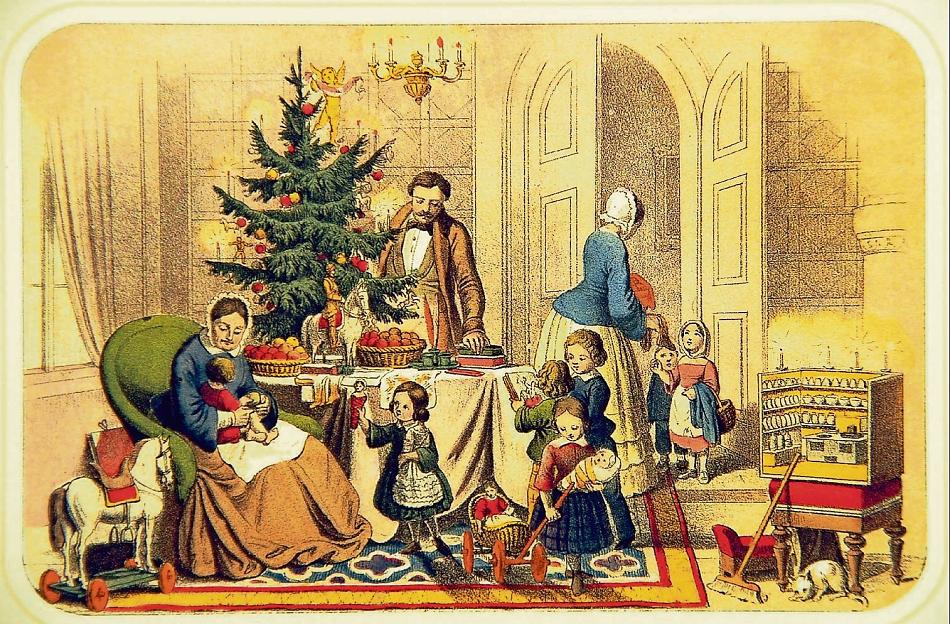
For the first time in Europe, the Christmas tree became a fashion in aristocratic and bourgeois families. 19th century genre
At the end of the 18th century, decorating the Christmas tree appeared in many parts of Germany and throughout Europe, especially in the homes of the aristocracy and affluent bourgeoisie. Based on ethnographic research, it can be said that the peasantry only put up an ornate pine tree as part of the holiday from the end of the 19th century, but the custom has become common in more and more sections of society, both the poor and the aristocracy, over the course of a few decades.
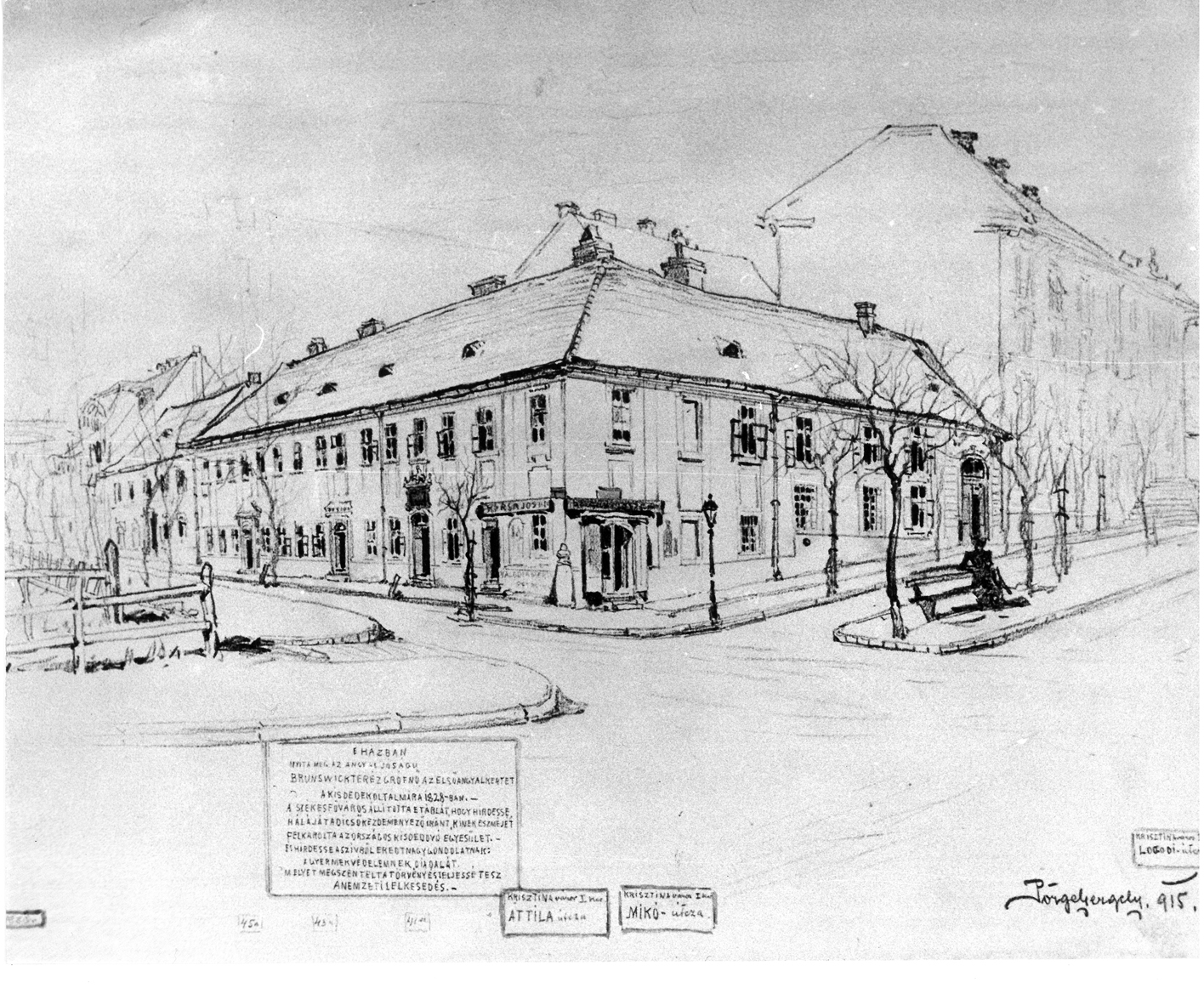
In this house, in the Angyalkert [Angel Garden] at 8 Mikó Street, 1st District, Countess Teréz Brunszvik put up a Christmas tree for her students on 24 December 1828 (Source: Martonvásár Kindergarten Museum)
In Hungary, pine decoration has a history of nearly two hundred years, but there is no common position on exactly in whose house the first tree appeared at Christmas. Most people associate the spread of the Christmas tree with Teréz Brunszvik. It is certain that in the first Hungarian kindergarten she founded, at 8 Mikó utca, in the 1st District, in Buda, she and her little students celebrated Christmas with a pine tree on 24 December 1828.
In his book A karácsonyfa elterjedése [The Spread of the Christmas Tree] László Lukács recalls an article published in the magazine Élet és Literatura in 1842, in which Countess Teréz Brunszvik brought the fashion of decorating a Christmas tree from Vienna to Buda. On 1 June 1828, Teréz Brunszvik, the pioneer of child-rearing in Hungary, opened the first kindergarten in Hungary and Central Europe in the home of her mother, Anna Brunszvikné Seeberg, at 8 Mikó Street, opening a new path in the history of child-rearing in Hungary. In this institute, the so-called Angyalkert [Angel Garden], she decorated a pine tree for the children, so according to many, the custom started to spread in Hungary from here.
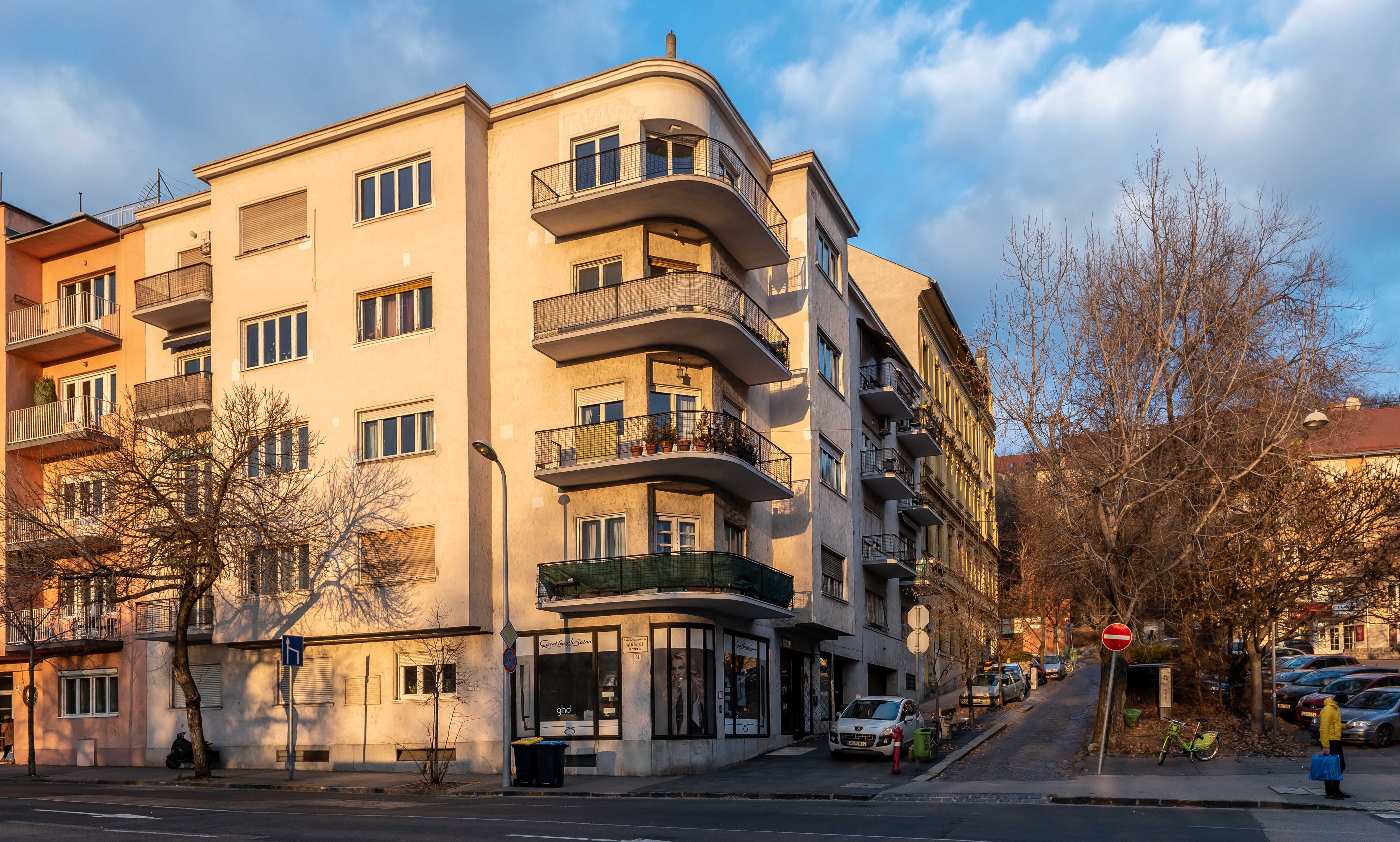
The kindergarten of Teréz Brunszvik stood on the site of the building at 81 Attila Road and 8 Mikó Street (Photo: Balázs Both / pestbuda.hu)
There are several ways in which the Countess could first hear about the Christmas tree which was increasingly popular in Europe. According to the research, the Brunszvik family spent their holidays in 1814 in the family castle of Martonvásár (which still stands today), which was also attended by János Asbóth and his family.
János Asbóth, the director of the Georgikon in Keszthely, met the trend of the Christmas pine tree during his studies in Göttingen. It cannot be ruled out that Teréz Brunszvik first heard from him about this custom. It is also possible that in one of her favourite readings, Goethe Werther’s Love and Death , she read about the Christmas tree as a new German way. In the novel, the tree "captures the soul in paradise bliss."
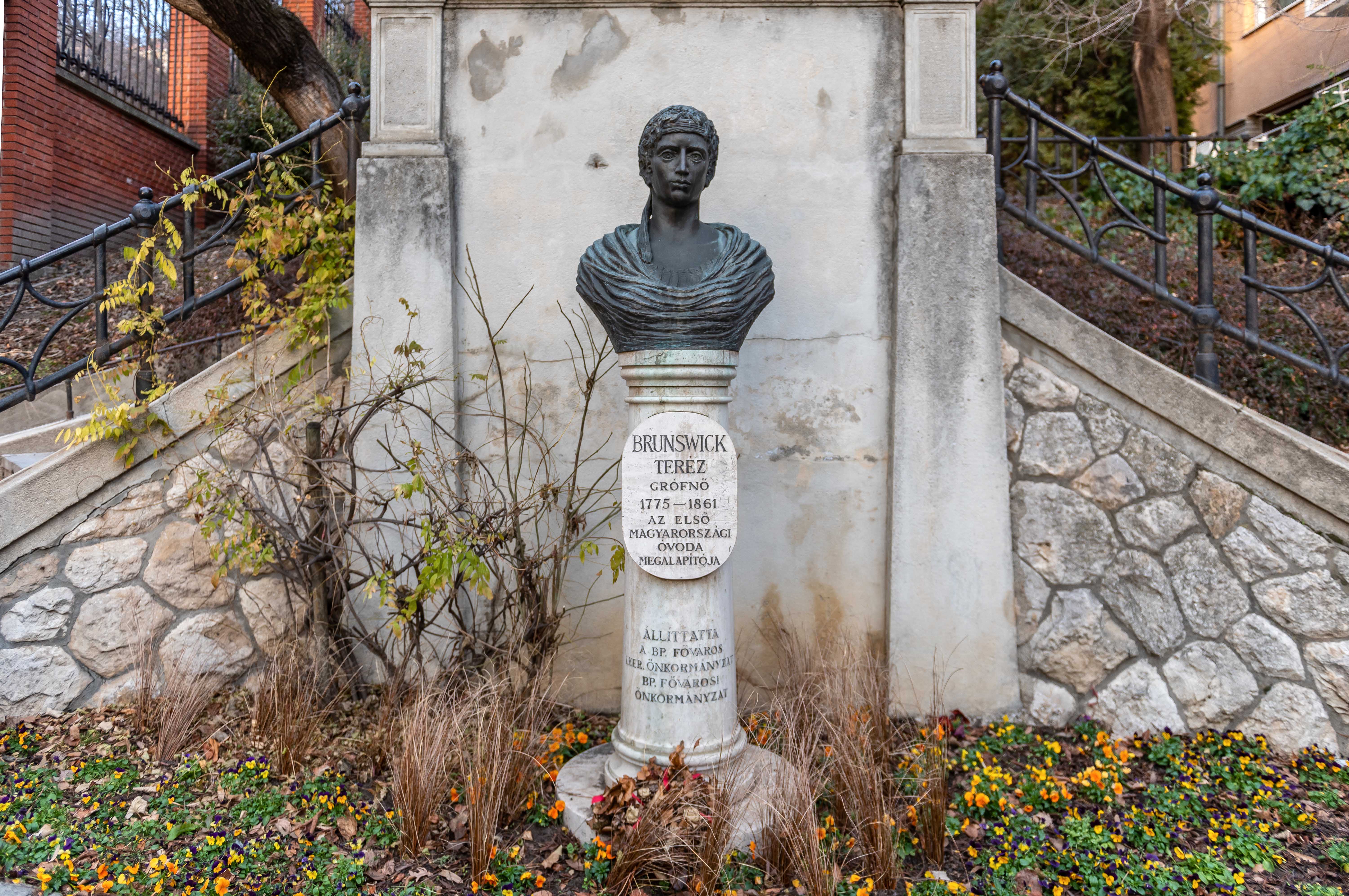
Statue of Teréz Brunszvik at the intersection of Logodi Street and Gránit Stairs in 1st District (Photo: Balázs Both / pestbuda.hu)
László Lukács points out, however, that Baron Frigyes Podmaniczky states in his memoirs published in the Christmas issue of the Budapesti Hírlap in 1884 and then in his diary published in 1887 that his mother, the Dresden-born Countess Elza Noszticz-Jäckendorf, daughter of a Saxon royal minister introduced the Christmas tree to Pest in 1828.
The baron writes about the Christmas Eve of the aristocratic family in Pest in the Reform Era: “Arriving on Christmas Day, at six o'clock, a triple bell announced the arrival of our Christmas tree. Then our father's living room opened and we, the children - there were five of us - on a large table in the middle of a room, each of us found our own Christmas tree and the various gifts grouped around it. Even now, this loving image floats before me, the serious, reverent attitude of our father, the kind gaze of our mother, the bursting joy on the faces of children, on the blush of which the faint light of wax candles was broken. The evening was spent with each of us scrutinizing the gifts we got and each of us thanked the happy parents with a special hot, grateful hand kiss. We had to listen to some advice and admonitions from our parents. The words we heard then were deeply engraved in our souls, and they floated before us all year round as a warning. The celebration of Christmas according to today's forms, or rather the Christmas tree itself, was introduced to Hungary by my mother… ”
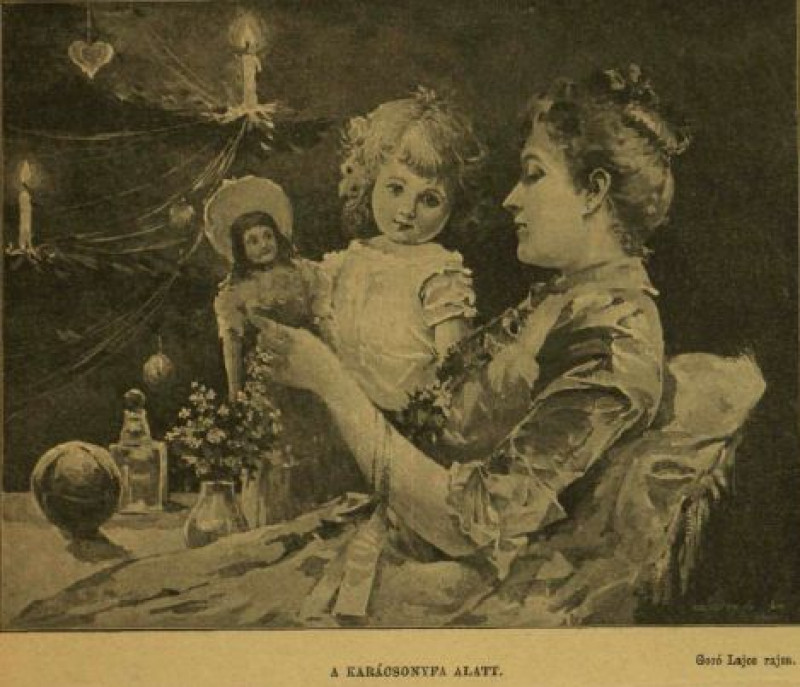
Under the Christmas Tree (Vasárnapi Ujság 24 December 1900)
In the 1905 issue of the magazine Jövendő , Sándor Vay reports that the fashion was brought to our country in 1819 by the third wife of Palatine Joseph, Princess Maria Dorottya of Württemberg, through whom the aristocratic families became acquainted.
At first, the custom was less known in the countryside than in Pest-Buda, as shown by the memoir of Baron Béla Splény, a landowner from Páty, who recorded this in 1877: "The now fashionable Christmas trees did not become a custom back then". The establishment of the Christmas tree began only after the War of Independence in 1848-49.
In the capital, servants serving in bourgeois families played an important role in spreading the custom of decorating a Christmas tree. After all, after they got married and returned home to their village, they also decorated a tree with their own families. It was not until after the First World War that decorating a Christmas tree became common in Hungarian villages.
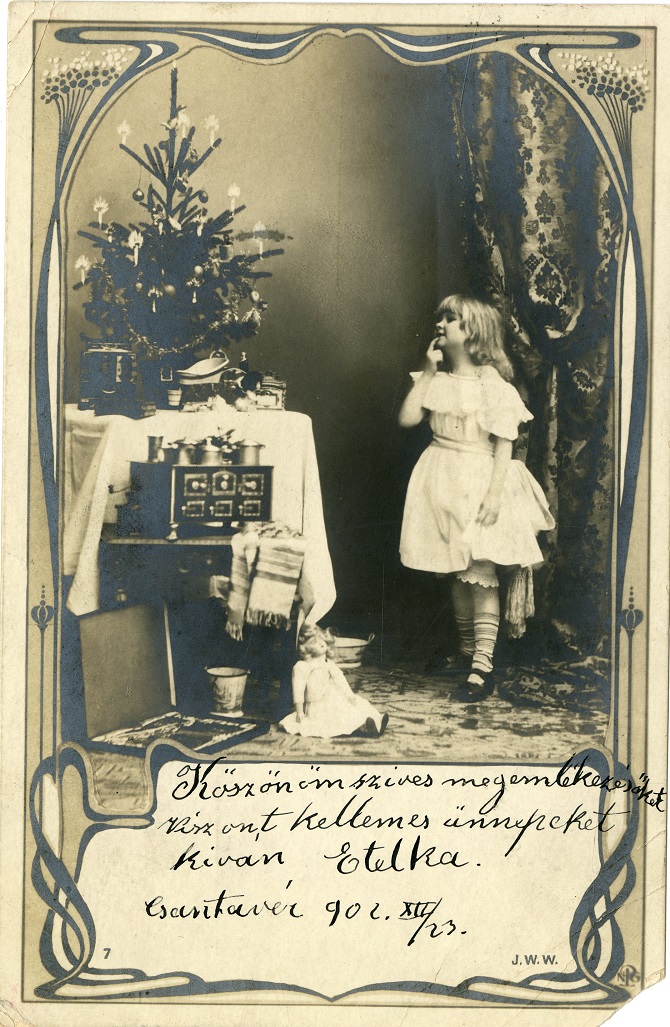
Greeting card from 1902 (Source: National Széchényi Library)
Educational institutions also played an important role in spreading the decoration of a Christmas tree. Decorated pine trees also appeared in kindergartens and schools, and in the second half of the 19th century, Christmas trees for children were also regularly put up in orphanages. (By the way, Countess Teréz Brunszvik opened a total of three kindergartens in Buda, one in Pest, and several institutions in the countryside.)
The trees, called the Christmas trees of poor children or the Christmas trees of orphans, were put up socially and small gifts were placed under them. On 26 December 1870, for example, the newspaper Ellenőr reported that the Christmas trees for the poor had already been put up in orphanages. In the girls' orphanage of the Hungarian Housewives, 48 girls were given presents under the ornate tree.
Until the 1920s, the tree was decorated with fruits, small handmade objects and spheres, and then serial products, silver lamellas, candle holders and spheres appeared. The most traditional element in the decoration of the Christmas tree was a glowing glass sphere symbolizing light, that is, Christ and wholeness, the apple that also symbolized the first sin, as well as the garlands that depicted the serpent of paradise.
On the top of the tree, ornaments referring the star of Bethlehem were already placed at that time, or a small white silk disk with an angel in the middle. The family surrounded the Christmas tree, lit candles, sang. Thus they displayed the light-bringing Jesus, the light of the world, and drove out the darkness, the evil.
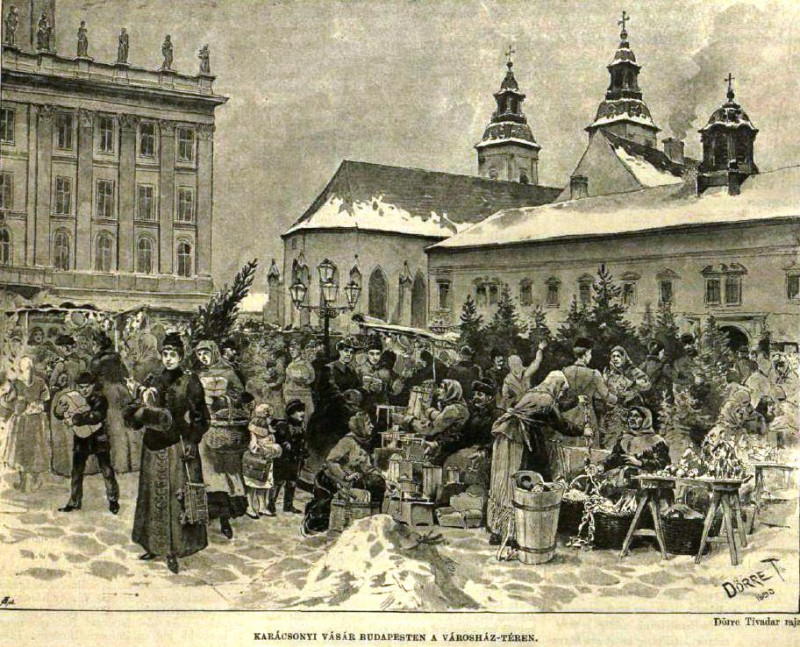
Pine Fair in Városház Square in 1890 (Source: Vasárnapi Ujság, 21 December 1890)
Thanks to the rapid popularity of the Christmas tree in the capital, pine fairs were already held in the square in front of the old town hall of Pest in the 1860s. The youth literature of the second half of the 19th century, as well as articles in picture newspapers, but also the Christmas attachments to the newspapers and the picture postcards sent for Christmas, played an important role in spreading the custom of decorating a Christmass tree among the bourgeoisie.
After the Christmas fairs also attracted more and more people at the end of the 19th century, stalls and vendors crowded the market square in front of the Old Town Hall. The festive gifts at that time were mainly about cheering up the children, so you could buy a toy horse, drum, trumpet, toy sword for the boys, dolls, doll furniture and toy utensils for the little girls, liquorice, potato-sugar, and gingerbread figures. Craftsmen and traders offering children's clothing and boots also appeared, so Christmas tree vendors were often pushed to the edge of the square, and sometimes even to the ice on the frozen Danube.
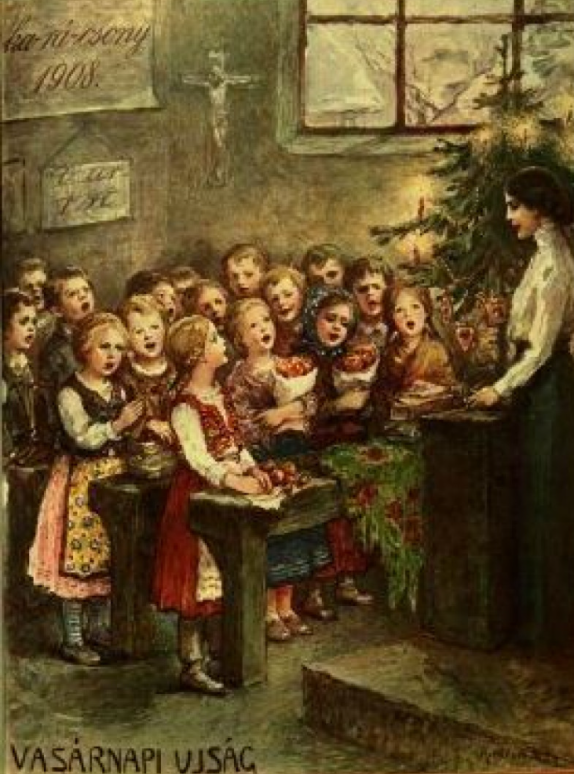
Pine Fair in Városház Square in 1890 (Source: Vasárnapi Ujság, 21 December 1890)
Thanks to the rapid popularity of the Christmas tree in the capital, pine fairs were already held in the square in front of the old town hall of Pest in the 1860s. The youth literature of the second half of the 19th century, as well as articles in picture newspapers, but also the Christmas attachments to the newspapers and the picture postcards sent for Christmas, played an important role in spreading the custom of decorating a Christmass tree among the bourgeoisie.
After the Christmas fairs also attracted more and more people at the end of the 19th century, stalls and vendors crowded the market square in front of the Old Town Hall. The festive gifts at that time were mainly about cheering up the children, so you could buy a toy horse, drum, trumpet, toy sword for the boys, dolls, doll furniture and toy utensils for the little girls, liquorice, potato-sugar, and gingerbread figures. Craftsmen and traders offering children's clothing and boots also appeared, so Christmas tree vendors were often pushed to the edge of the square, and sometimes even to the ice on the frozen Danube.
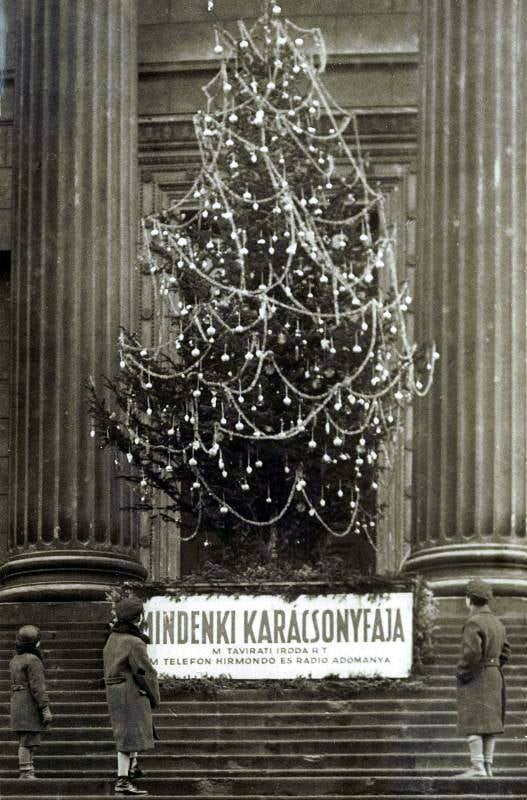
The Christmas Tree of Everyone in front of the National Museum (Source: Hungarian National Museum)
The first Christmas Tree of Everyone was placed in the square in front of the church in Ferenciek Square, and from 1934 the Hungarian National Museum became the main location. But Christmas trees were put up not only here, but also in 14 other locations in Budapest, as well as in the countryside. However, this is another story about Christmas trees that make communities happy….
Cover photo: The Christmas tree was first set up for children in Hungary in the kindergarten of Teréz Brunswick, from here the custom spread at first in aristocratic and bourgeois families (Source: Vasárnapi Ujság, 24 December 1871)

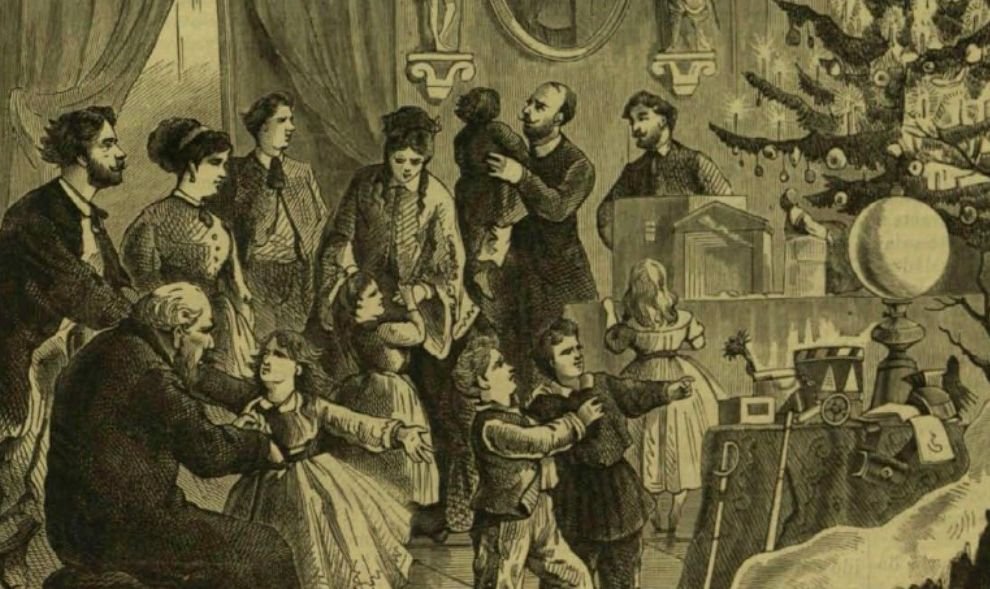



































Hozzászólások
Log in or register to comment!
Login Registration